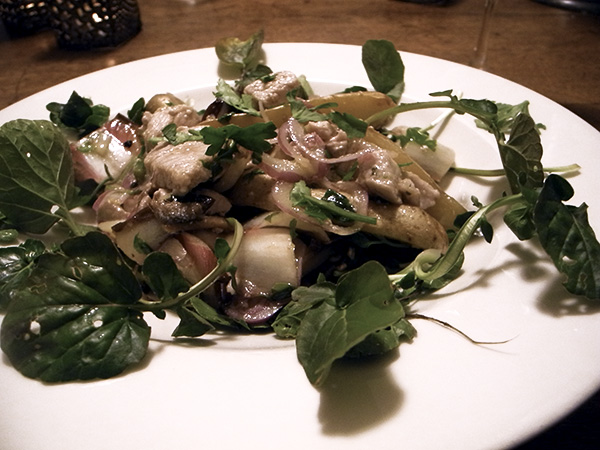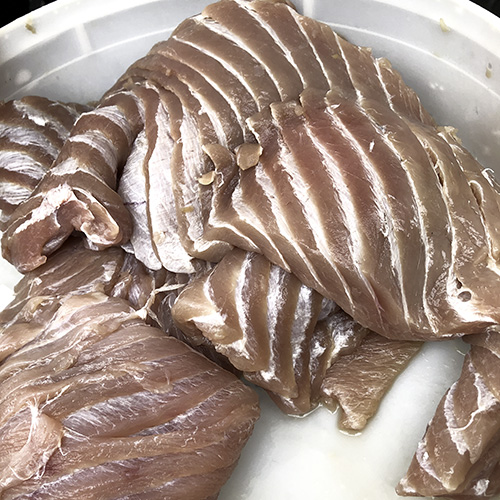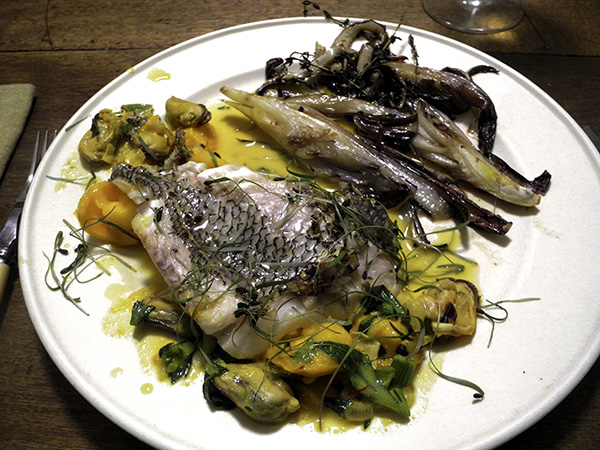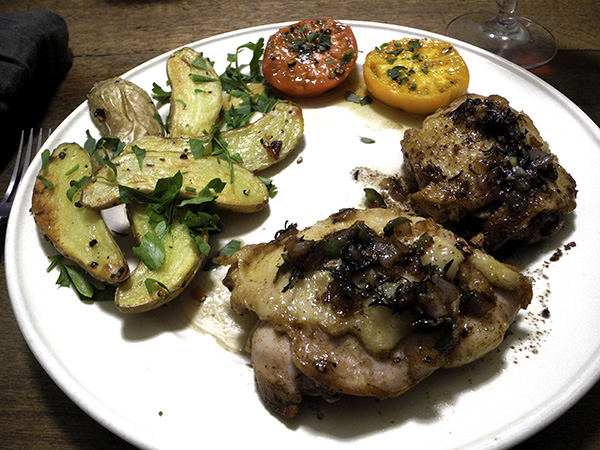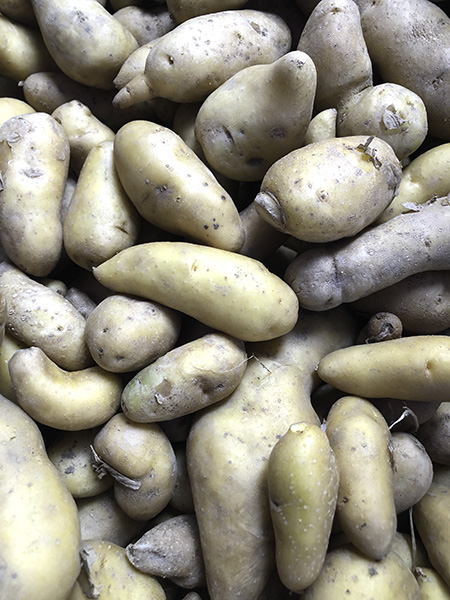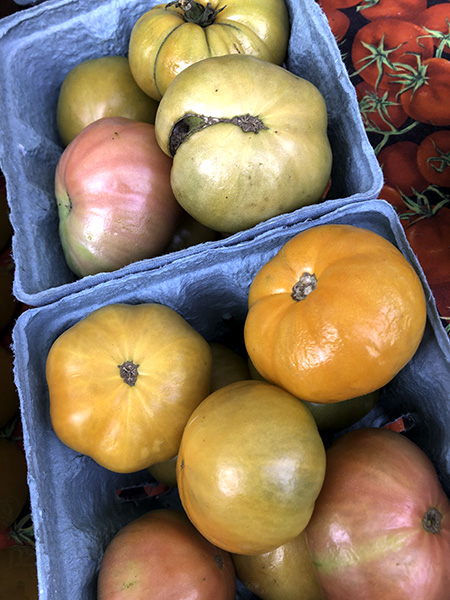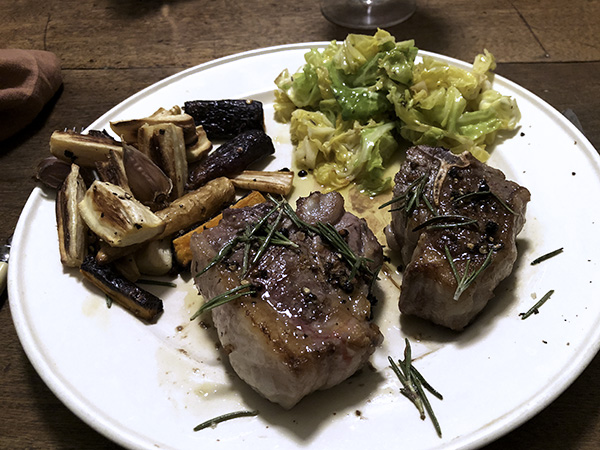
So perfect, and so delicious, and it’s also so very easy to arrange both.
- four lamb loin chops (1.21 lbs) from Shannon Brook Farm, dried thoroughly, cooked on a very hot enameled cast iron grill pan for about 5 or 6 minutes on each side, seasoned with salt and pepper after they were first turned over, finished with a squeeze of juice from an organic California Whole Foods Market lemon, scattered with chopped rosemary from Philipps Farms
- two parsnips from Norwich Meadows Farm, scrubbed, trimmed, cut roughly into 3 inch lengths, half inch widths, tossed with olive oil, salt, freshly ground black pepper, a little crushed dried habanada pepper, and branches of thyme from West Side Market (Uncle Vinny’s), spread in a single layer onto an unglazed ceramic oven pan, roasted at 400º until done (20 to 25 minutes)
- one small Savoy cabbage from Tamarack Hollow Farm, washed, quartered, cored, sliced into one-half-inch ribbons, sautéed in a scant tablespoon of olive oil inside a large enameled cast iron pot until wilted but still crunchy, stirring occasionally, seasoned with sea salt and freshly-ground black pepper, a teaspoon and a half of just-toasted cumin seed mixed in, finished by stirring half of a teaspoon of Columela Rioja 30 Year Reserva sherry vinegar, then cooked for another couple of minutes
- the wine was a French (Rhône/Ardèche) red, Michel Savel (Herve Souhaut) Marecos Red 2016, from Copake Wine Works
- the music was an album of Shostakovich piano concertos, Anna Vinnitskaya accompanied by the Kremerata Baltica
